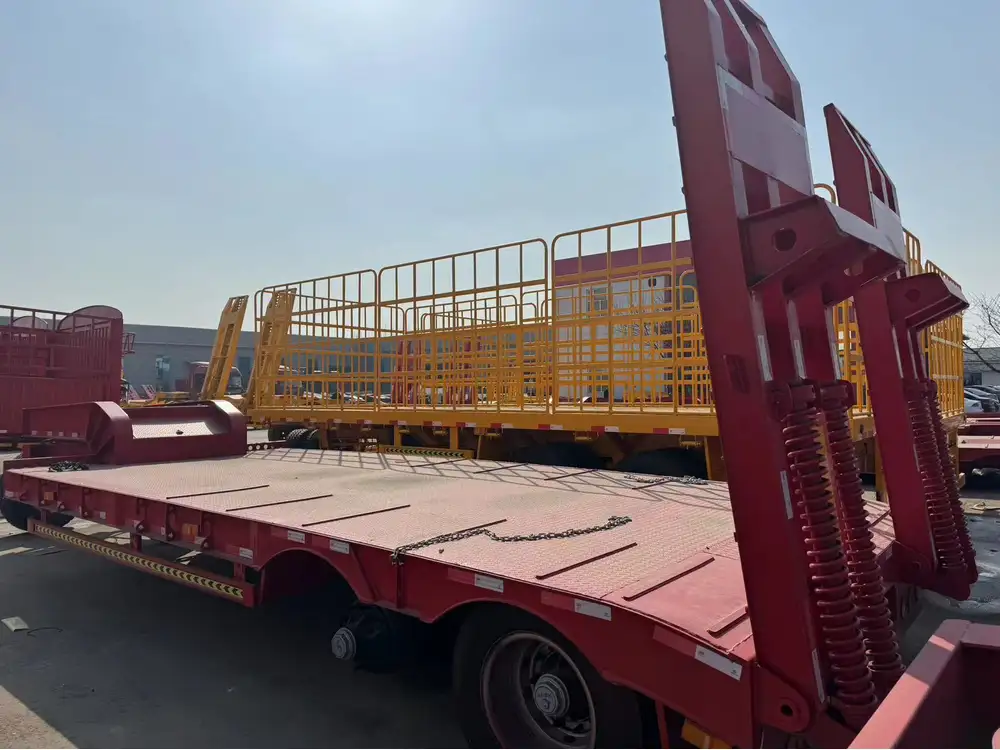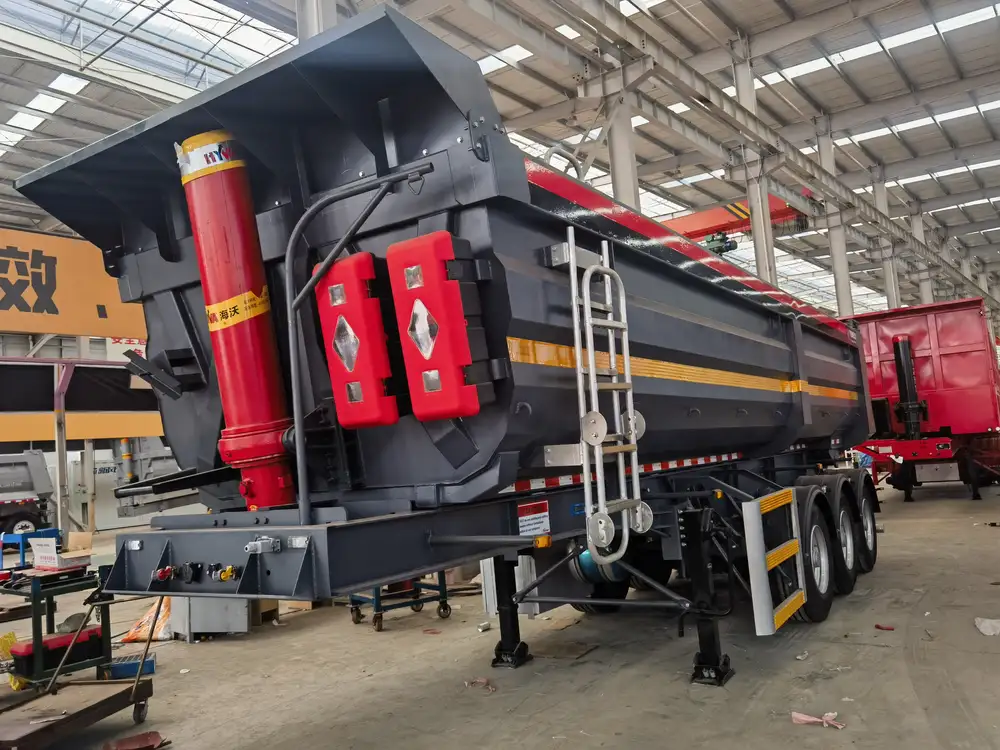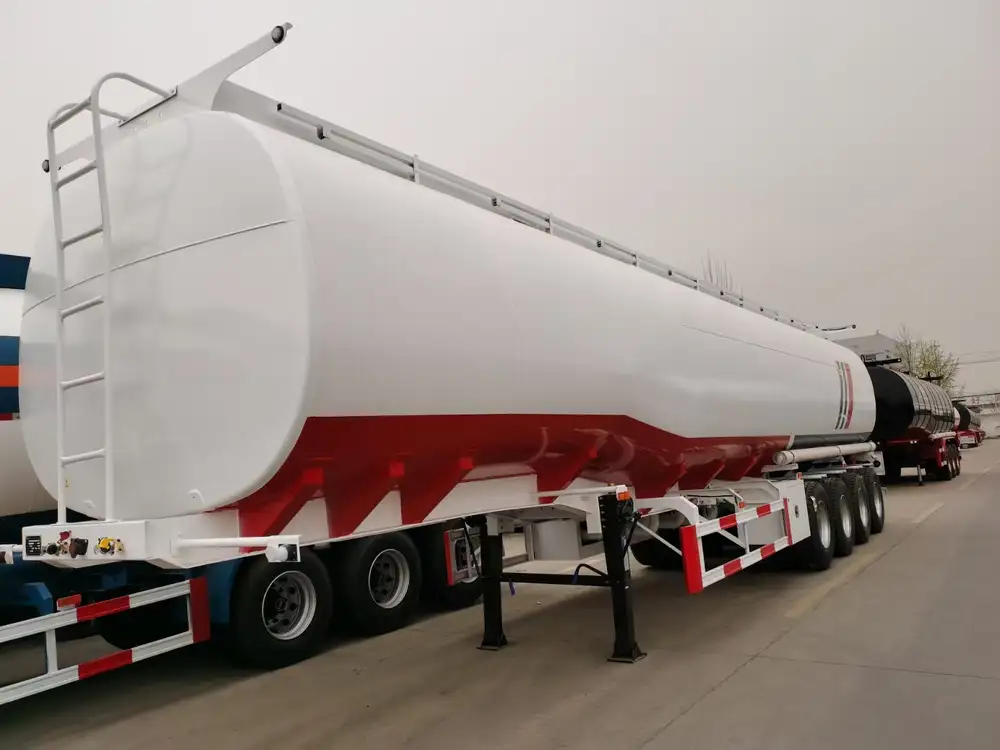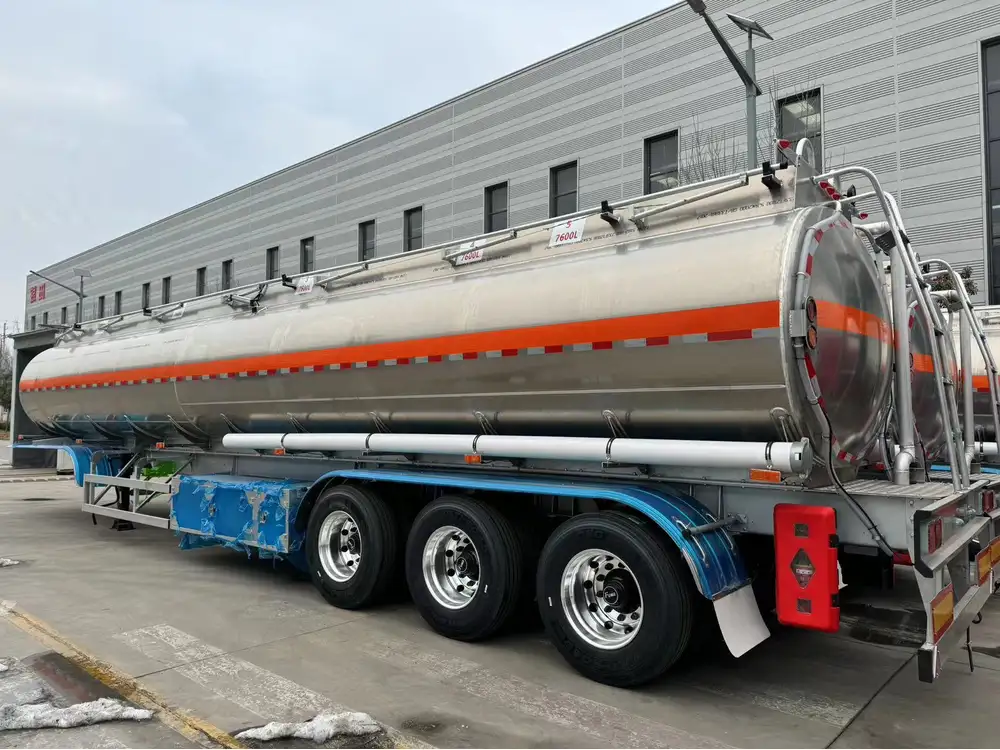Loading cars onto a car carrier trailer is a task that requires careful planning, attention to detail, and adherence to safety protocols. In this comprehensive guide, we will explore the step-by-step process, best practices, and essential considerations, ensuring that this pivotal task is executed efficiently and securely.
Understanding the Structure of Car Carrier Trailers
Before delving into the loading process, it’s crucial to comprehend how car carrier trailers are designed. Car carriers vary in type, ranging from open trailers to enclosed trailers, each suited for different purposes.
Types of Car Carrier Trailers
| Trailer Type | Description | Advantages | Disadvantages |
|---|---|---|---|
| Open Car Carrier | Exposed to the elements, can carry multiple cars | Cost-effective, easy to load/unload | Vehicles are exposed to weather, dust |
| Enclosed Car Carrier | Shielded from the elements, protects expensive vehicles | Provides extra protection, offers security | Generally more expensive, limited capacity |
Understanding these differences helps prioritize safety and efficiency based on the type of trailer in use.

Essential Safety Equipment
Before embarking on loading, ensure that the following safety gear is readily available:
- High-Visibility Safety Vests: To make personnel easily identifiable.
- Safety Glasses: Protects eyes from debris.
- Gloves: Provides grip and protects hands.
- Hard Hats: Essential when working in areas with overhead hazards.
- Safety Cones: To demarcate loading zones.
Having these items accessible not only provides safety but also fosters a responsible loading environment.
Pre-Loading Preparation
Step 1: Inspect the Trailer
Before loading begins, a thorough inspection of the car carrier trailer is vital. Here’s a checklist you can utilize:
- Tires: Ensure that they are adequately inflated and in good condition.
- Brakes: Test braking systems for reliable functionality.
- Ramp Condition: Inspect ramps for any obstructions or damage.
- Straps and Chains: Check for wear and tear.

Step 2: Choose the Right Location
Select a flat and stable surface for loading. An ideal location is essential for ensuring the safety and precision during loading.
Step 3: Organize the Sequence of Loading
Plan the order in which vehicles will be loaded. Consider weight distribution; heavier vehicles should be placed at the bottom, with lighter ones on top, to maintain stability during transport.
Step-by-Step Loading Process
Once pre-loading preparations are complete, the actual loading process begins.

Step 1: Positioning the Car Carrier Trailer
Ensure that the trailer is level and stable. Use wheel chocks to secure the trailer before loading begins. This precaution minimizes the risk of movement as vehicles are placed onto the trailer.
Step 2: Loading the First Vehicle
- Assess the Vehicle: Check for any visible damage or issues that could affect loading.
- Drive Up the Ramp: The driver should engage the vehicle in a low gear while gradually ascending the ramp. The ramp angle should be manageable.
- Alignment: Center the vehicle on the trailer. Proper alignment ensures even weight distribution.
- Engage the Parking Brake: Once the vehicle is in position, engage the parking brake to prevent rolling.
- Secure the Vehicle: Using ratchet straps or chains, secure the car in place.
Step 3: Loading Additional Vehicles
- Repeat the Steps: Follow the similar steps for each additional vehicle.
- Monitor Weight Distribution: Continuously assess weight distribution with every added vehicle. It ensures that the trailer’s center of gravity remains low, minimizing overturn risks.

Step 4: Final Securement
Once all vehicles are loaded, conduct a final inspection:
- Double-Check Tie-Downs: Ensure that all vehicles are securely strapped.
- Check for Movement: Give each vehicle a slight push to confirm that it’s stable.
Post Loading Protocol
Step 1: Inspect Everything
Before hitting the road, run through the checklist once more:
- Ensure that all straps and chains are in place.
- Conduct a check of the brake lights and turn signals of the trailer.
- Verify that the load is not exceeding weight limits.

Step 2: Securely Close the Trailer
For enclosed trailers, make sure that all doors are securely locked. For open trailers, consider using tarps if inclement weather is expected.
Common Challenges and Solutions
Scenario 1: Vehicle Won’t Start
Solution: Use a jump starter or battery pack to get the vehicle moving. If that fails, a tow truck may be necessary to get the vehicle onto the trailer.

Scenario 2: Last-Minute Load Changes
Solution: If a sudden change arises, reassess the loading order to maintain balanced weight distribution. Re-secure all vehicles if needed.
Scenario 3: Ramp Issues
Solution: If the ramp is unstable, consider using additional supports or chocks to stabilize it before attempting to load a vehicle.
Conclusion: Mastering the Art of Loading
Loading a car carrier trailer is an integral skill for any involved in vehicle transportation. By following these outlined steps, employing safe practices, and being prepared for potential challenges, one can execute this task with efficiency and confidence.
Utilizing this comprehensive guide not only fosters a successful loading operation but also builds a foundation for future endeavors in car transportation. Continuous improvement, skill development, and adherence to safety protocols will ensure optimal results every time. Whether you are transporting classic cars, moving inventory for dealerships, or shipping across states, mastering the loading process is key to a smooth operation.



